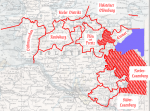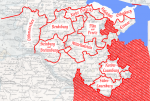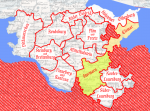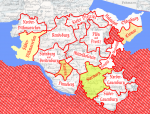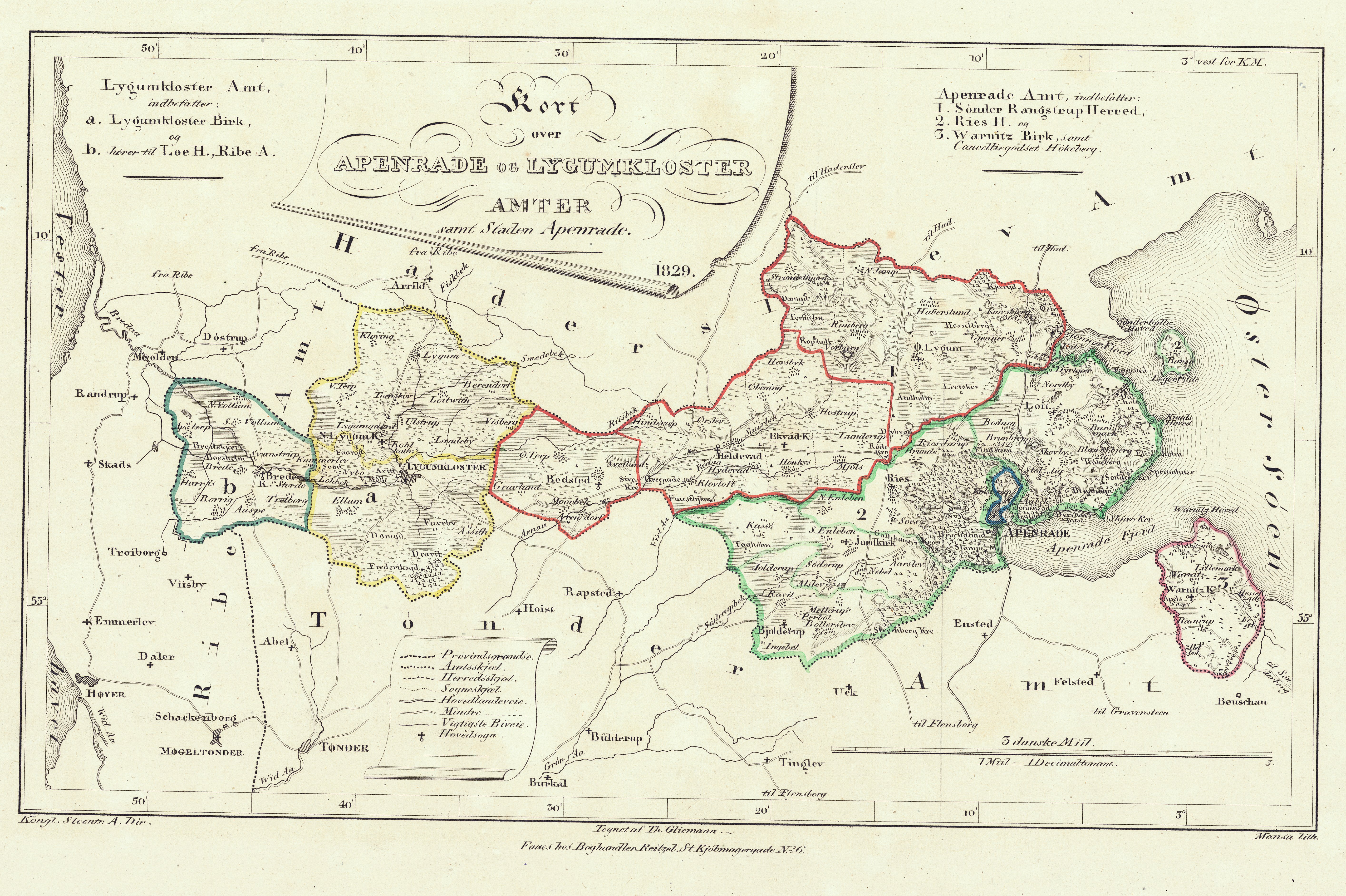Makemakean
Mr Makemean
- Pronouns
- Logical, unlike those in German
This is going reaaaaally slow.
The problem is not that we don't know the borders of pre-Prussian Holstein, because we found a very good map of those, and problem is neither that we don't know the relative population data in each and every little amt and county and fideikommiss and once-upon-a-time-land-belonging-to-a-Catholic-monastery-then-the-Reformation-happened-but-it's-still-for-administrative-purposes-300-years-later-judged-ecclesiastical-land, because I did find a German geographical work quoting extensively from the Danish census of 1845 which does contain all this information.
The problem is the particular projection on the map we are using. The cartographer seems to have been cheating a little, and so, to get the borders, I essentially need to go into Google Maps, find all the places mentioned in the map close to a border, and then fit that border as closely as humanely possible given the information we have to the borders given on that map unto our map. And it takes forever.
Still, Lauenburg turned out to be relatively easy to partition into two parts with relatively equal population that wonderfully enough each one is big enough to be a single member constituency:

Also, turns out that the old amt of Ahrensbök first fell into the hands of the Grand Duchy of Oldenburg after the Prussians conquered the duchies of Schleswig, Holstein, and Lauenburg from Denmark, and was given to this power by the Prussians as compensation for land lost elsewhere. It meant that the Oldenburg claims in Holstein were contiguous, but since that has been butterflies away, Ahrensbök still remains Danish (well, Holsteiner) in this timeline. Also means that Eutin, i.e. the northern part of the Prince-Bishopric of Lübeck, which still falls into Oldenburger hands, becomes this interesting little landlocked enclave in the Nordic Empire.
I assume that Oldenburg is the one German principality which is closest diplomatically to the Nordic Empire. Not just is of course the Grand Duke of the same house as the Nordic Imperial Family, but with borders like these, it wouldn't be strange if they're also into some sort of customs unions. The Free Cities of Lübeck and Hamburg are each city-state republics. I like to envisage that Lübeck over time becomes this financial center of Northern Europe, with very lax tax laws and non-existent tariffs and customs, where they also allow for gambling and a whole bunch of other things that are yet illegal in the Nordic Empire. They also never reform their truly medieval mercantile way of running the place. A Baltic Monaco/Singapore/Hong Kong-hybrid.
The problem is not that we don't know the borders of pre-Prussian Holstein, because we found a very good map of those, and problem is neither that we don't know the relative population data in each and every little amt and county and fideikommiss and once-upon-a-time-land-belonging-to-a-Catholic-monastery-then-the-Reformation-happened-but-it's-still-for-administrative-purposes-300-years-later-judged-ecclesiastical-land, because I did find a German geographical work quoting extensively from the Danish census of 1845 which does contain all this information.
The problem is the particular projection on the map we are using. The cartographer seems to have been cheating a little, and so, to get the borders, I essentially need to go into Google Maps, find all the places mentioned in the map close to a border, and then fit that border as closely as humanely possible given the information we have to the borders given on that map unto our map. And it takes forever.
Still, Lauenburg turned out to be relatively easy to partition into two parts with relatively equal population that wonderfully enough each one is big enough to be a single member constituency:

Also, turns out that the old amt of Ahrensbök first fell into the hands of the Grand Duchy of Oldenburg after the Prussians conquered the duchies of Schleswig, Holstein, and Lauenburg from Denmark, and was given to this power by the Prussians as compensation for land lost elsewhere. It meant that the Oldenburg claims in Holstein were contiguous, but since that has been butterflies away, Ahrensbök still remains Danish (well, Holsteiner) in this timeline. Also means that Eutin, i.e. the northern part of the Prince-Bishopric of Lübeck, which still falls into Oldenburger hands, becomes this interesting little landlocked enclave in the Nordic Empire.
I assume that Oldenburg is the one German principality which is closest diplomatically to the Nordic Empire. Not just is of course the Grand Duke of the same house as the Nordic Imperial Family, but with borders like these, it wouldn't be strange if they're also into some sort of customs unions. The Free Cities of Lübeck and Hamburg are each city-state republics. I like to envisage that Lübeck over time becomes this financial center of Northern Europe, with very lax tax laws and non-existent tariffs and customs, where they also allow for gambling and a whole bunch of other things that are yet illegal in the Nordic Empire. They also never reform their truly medieval mercantile way of running the place. A Baltic Monaco/Singapore/Hong Kong-hybrid.


